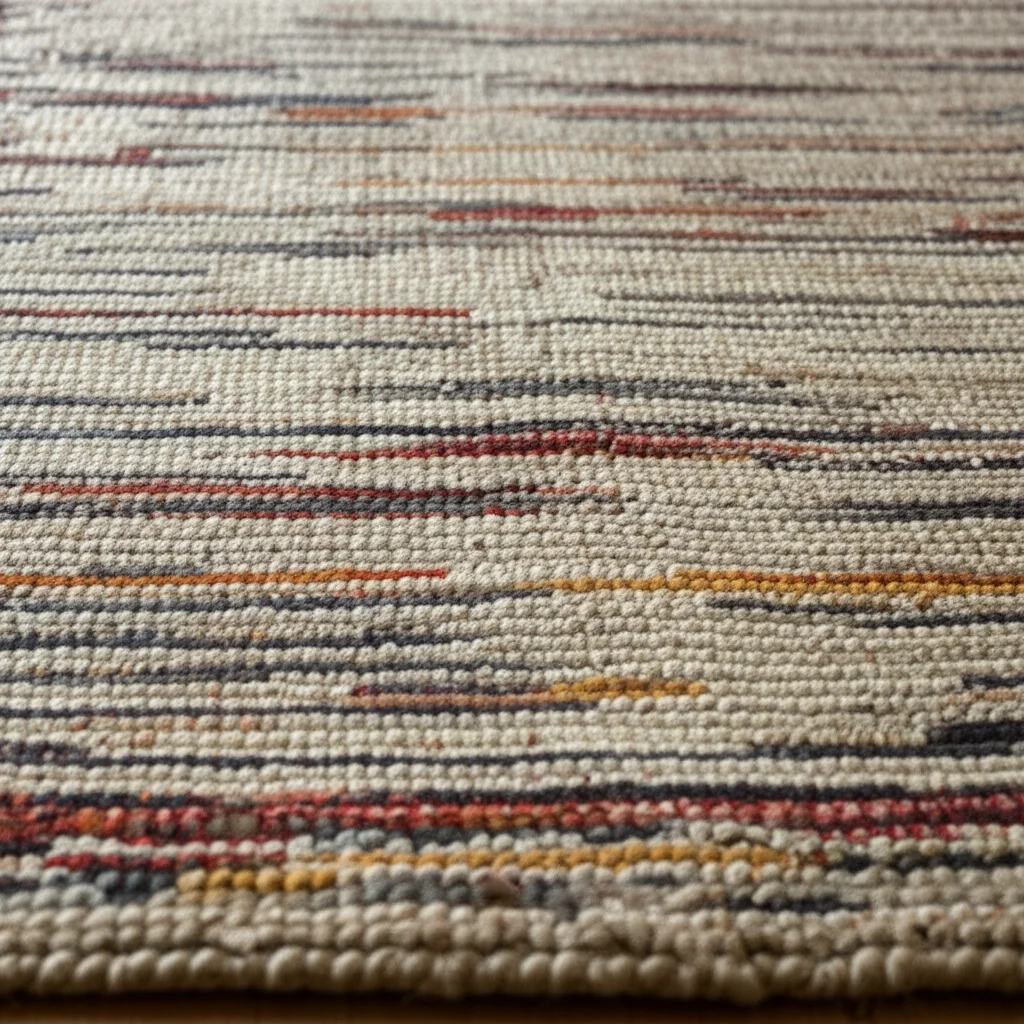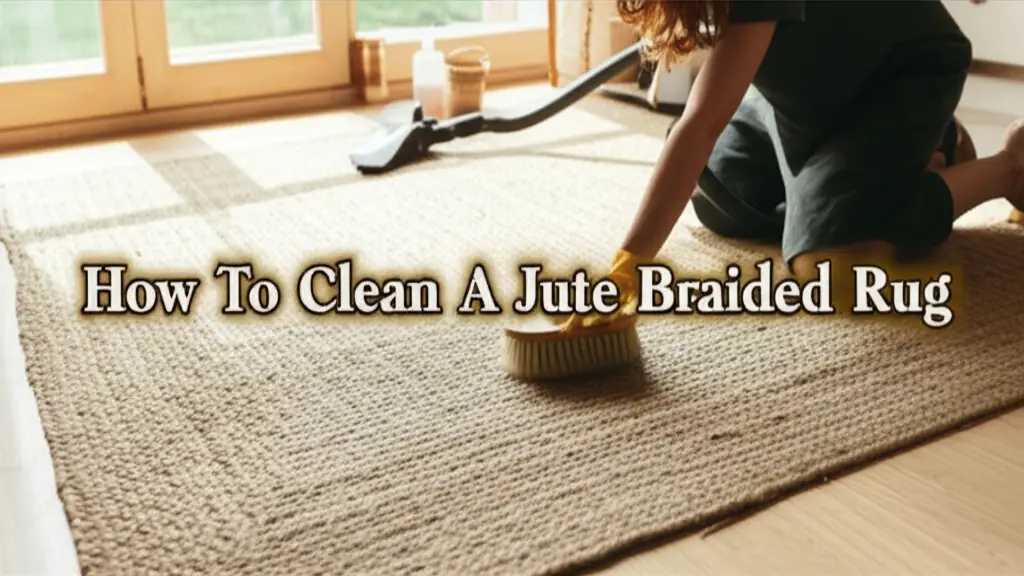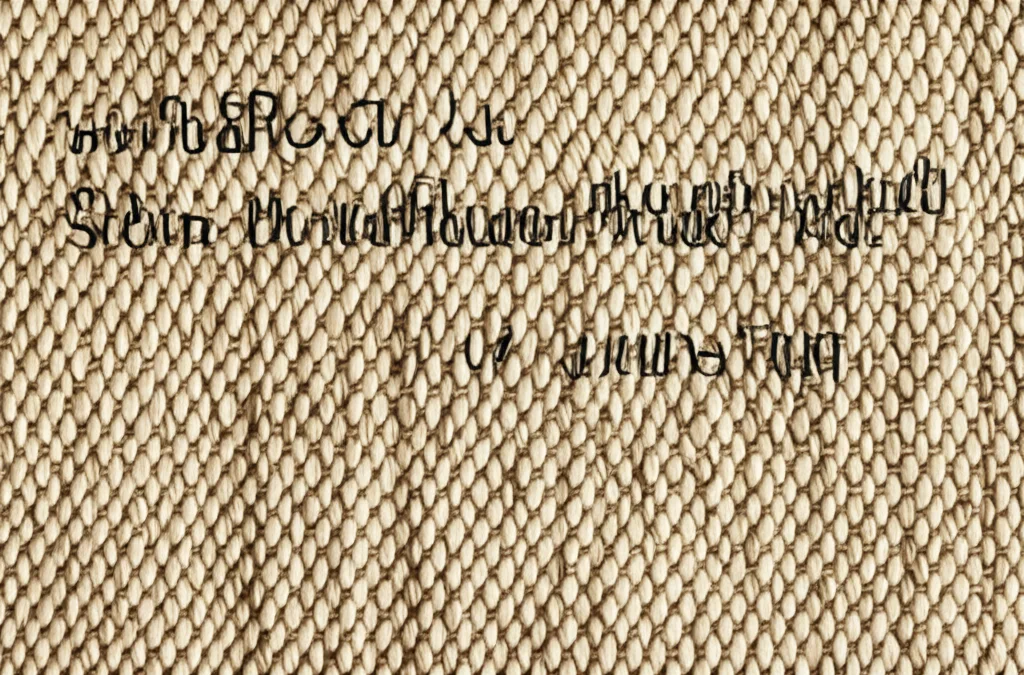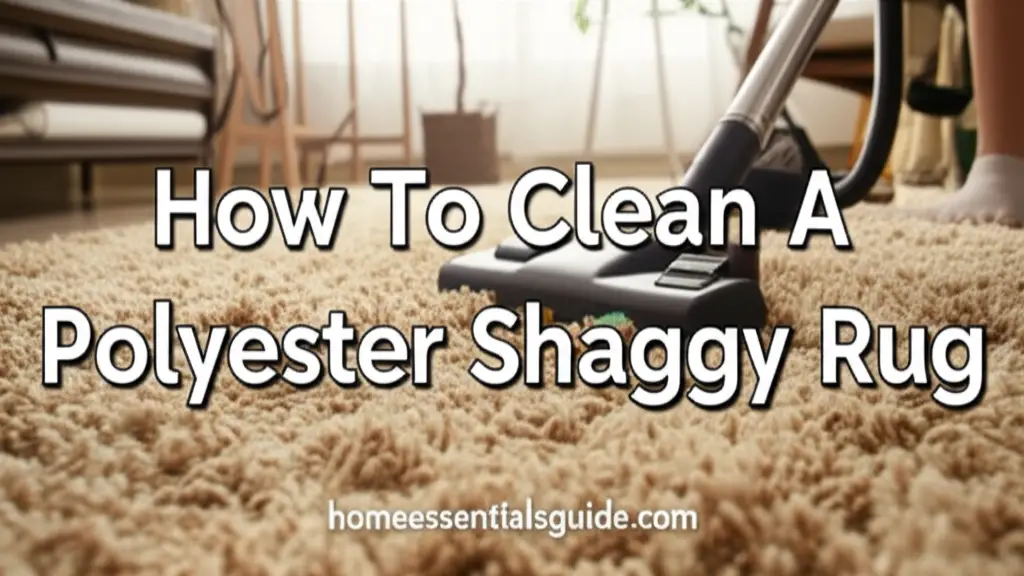· Todd Martin · Home Cleaning · 11 min read
How To Clean A Braided Wool Rug

How to Clean a Braided Wool Rug: The Complete Guide
Braided wool rugs add warmth, texture, and charm to any living space. Their intricate design and natural fibers create a cozy atmosphere that’s hard to match with other floor coverings. However, these beautiful rugs require proper care to maintain their appearance and extend their lifespan.
In this comprehensive guide, we’ll walk you through everything you need to know about cleaning and maintaining your braided wool rug, from routine care to tackling tough stains.
Key Takeaways
- Vacuum braided wool rugs regularly using a suction-only setting
- Spot clean spills immediately with mild wool-safe cleaners
- Deep clean only when necessary (1-2 times per year)
- Never soak or machine wash braided wool rugs
- Consider professional cleaning for valuable or heavily soiled rugs
The simplest way to clean a braided wool rug is to vacuum regularly using a suction-only attachment, spot clean spills immediately with a wool-safe cleaner, and perform gentle deep cleaning only when necessary, avoiding excessive moisture which can damage wool fibers.
Understanding Braided Wool Rugs
Before diving into cleaning methods, it’s important to understand what makes braided wool rugs unique. Traditional braided wool rugs are made by braiding strips of wool fabric into long strands and then coiling these strands into oval, round, or rectangular shapes. The braids are typically sewn together with strong thread to create a durable, textured surface.
Wool fibers have natural properties that make them both resilient and somewhat challenging to clean:
- Natural oils that repel moisture and dirt
- Scales on the fiber surface that can trap particles
- Ability to absorb up to 30% of their weight in moisture without feeling wet
- Natural resistance to bacteria and mold growth
- Sensitivity to harsh chemicals and excessive moisture
These characteristics mean that while wool rugs are naturally soil-resistant, they require specific cleaning approaches to preserve their integrity. Improper cleaning methods can lead to shrinkage, color bleeding, fiber damage, or mildew problems.
Spot Cleaning Stains on Braided Wool Rugs
Despite your best efforts, stains sometimes occur on braided wool rugs. Here’s how to tackle different types of stains without damaging the wool fibers.
Safe Cleaning Solutions for Wool
When spot cleaning a braided wool rug, it’s crucial to use pH-neutral cleaners that won’t damage the natural fibers. Safe options include:
- Mild dish soap (like Dawn) diluted with water (1 teaspoon per quart of cool water)
- Specialized wool rug cleaners
- White vinegar solution (1 part vinegar to 2 parts water) for odor removal
- Club soda for food and beverage stains
Never use bleach, ammonia-based cleaners, or alkaline products on wool rugs, as these can damage fibers and cause discoloration.
Step-by-Step Spot Cleaning Process
For most common stains on braided wool rugs:
- Test your cleaning solution on an inconspicuous area first
- Blot up as much of the spill as possible with absorbent cloths
- Apply a small amount of your chosen cleaning solution to a clean cloth (never directly to the rug)
- Gently blot the stain, working from the outside toward the center
- Alternate between a cleaning cloth and a dry cloth to prevent oversaturation
- Once the stain is removed, “rinse” by blotting with a cloth dampened with clean water
- Blot dry with towels and elevate the area for faster drying
- Allow to dry completely before walking on the area
Treating Specific Types of Stains
Different stains require slightly different approaches:
Food and Beverage Stains: Start with club soda or diluted dish soap solution. For coffee or tea stains, a mixture of white vinegar and water can help neutralize the tannins.
Pet Accidents: Blot up moisture, then clean with an enzymatic pet stain remover that’s safe for wool. Avoid steam cleaning, which can set odors into wool fibers. For more stubborn pet stains, check out how to clean a jute braided rug for additional techniques that work on wool rugs as well.
Mud and Dirt: Allow to dry completely, then vacuum thoroughly. If residue remains, follow the spot cleaning process with mild soap solution.
Grease or Oil: Sprinkle cornstarch or baking soda on the stain, let sit for several hours to absorb the oil, then vacuum. Follow with spot cleaning if needed.
Deep Cleaning Braided Wool Rugs
While routine maintenance and spot cleaning should handle most cleaning needs, occasionally your braided wool rug will benefit from a deeper cleaning. This should be done sparingly—typically only once or twice a year—to avoid unnecessary stress on the wool fibers.
When to Deep Clean
Consider deep cleaning your braided wool rug when:
- It looks visibly dirty despite regular vacuuming
- There’s an overall dullness to the colors
- There’s a noticeable odor
- After a significant event like a party or holiday gathering
- Seasonally, especially before storing for summer
DIY Deep Cleaning Method
For a gentle yet effective deep cleaning of your braided wool rug:
- Vacuum thoroughly on both sides
- Prepare a cleaning solution of cool water and wool rug shampoo according to product directions
- Test the solution on an inconspicuous area first
- Using a soft brush or sponge, apply the solution sparingly to a small section
- Work in the direction of the braids, not against them
- Rinse the area with a clean, damp cloth
- Continue section by section until the entire rug is cleaned
- Blot excess moisture with clean, dry towels
- Allow to dry completely on a flat surface, flipping occasionally
Never soak the rug or use excessive water, as wool absorbs moisture easily and can take a very long time to dry. If you’re wondering about other natural fiber rugs, learn how to clean a sisal rug for comparison.
Professional Cleaning
For valuable, antique, or heavily soiled braided wool rugs, professional cleaning is often the safest option. Professional rug cleaners have specialized equipment and expertise to clean wool rugs without damaging them.
When selecting a professional cleaner:
- Look for specialists who have experience with wool and braided rugs
- Ask about their cleaning methods (avoid services that use excessive water)
- Inquire about moth prevention treatments
- Request references or read reviews from other wool rug owners
Professional cleaning typically costs $2-$8 per square foot, depending on the rug’s condition, size, and your location. While this represents an investment, proper professional cleaning can extend your rug’s life significantly.
Common Mistakes to Avoid
When cleaning braided wool rugs, certain practices can cause permanent damage:
Never Machine Wash
Despite what you might read elsewhere, even small braided wool rugs should never be machine washed. The agitation, water temperature, and spinning can cause shrinkage, distortion of the braids, and damage to the stitching that holds the braids together.
Avoid Steam Cleaning
Steam cleaning introduces too much heat and moisture into wool fibers, which can lead to shrinkage, felt-like texture, and potential mildew problems. For a safer deep cleaning method, see our guide on how to clean a wool rug without steam.
Beware of Sunlight During Drying
While your rug needs to dry thoroughly after cleaning, never place it in direct sunlight to speed the process. UV rays can fade the colors dramatically. Instead, dry indoors in a well-ventilated area with fans to circulate air.
Don’t Use Harsh Chemicals
Bleach, ammonia, oxygen cleaners, and alkaline products can destroy wool fibers and cause irreversible damage to your rug’s color and texture.
Routine Maintenance for Braided Wool Rugs
Regular maintenance is crucial for keeping your braided wool rug looking its best and extending its lifespan. Here are the essential routine care tasks:
Regular Vacuuming
Vacuuming is the most important routine maintenance task for any wool rug. For braided wool rugs:
- Vacuum 1-2 times per week in low-traffic areas
- Vacuum 2-3 times per week in high-traffic areas
- Always use the suction-only setting without a beater bar or rotating brush
- Use a canister vacuum with an attachment specifically designed for rugs
- Vacuum both sides of the rug if possible (flip it over a few times a year)
- Vacuum in the direction of the braids to prevent fraying
When vacuuming, pay special attention to edges and corners where dust and debris tend to accumulate. If your rug has fringes, be careful not to catch them in the vacuum.
Rotating Your Rug
To ensure even wear, rotate your braided wool rug every 3-6 months. This is particularly important for rugs in high-traffic areas or rooms that receive uneven sunlight, which can cause fading over time.
Immediate Spill Response
Accidents happen, and responding quickly to spills is essential for preventing stains on your braided wool rug:
- Blot (don’t rub) immediately with clean, white absorbent cloths or paper towels
- Continue blotting until no more liquid transfers to the cloth
- For water-based spills, dampen a clean cloth with plain water and blot gently
- For stubborn spills, use a wool-safe cleaner (more on this in the next section)
- Allow the area to dry completely, using fans if necessary
Remember that wool naturally repels liquid for a short time, giving you a brief window to act before the spill penetrates the fibers.
Preserving and Protecting Your Braided Wool Rug
Prevention is always easier than cleaning. Here are some strategies to keep your braided wool rug looking its best:
Use Rug Pads
A quality rug pad provides numerous benefits:
- Creates airflow beneath the rug
- Prevents slipping and bunching
- Reduces wear from foot traffic
- Adds cushioning and comfort
Choose a pad specifically designed for wool rugs, and make sure it’s slightly smaller than the rug itself so it doesn’t show. Learn more about how to clean a rug pad to maintain both your pad and rug.
Implement a No-Shoes Policy
One of the most effective ways to keep any rug clean is to remove shoes before walking on it. Consider placing a shoe rack or basket near entrances to encourage this habit.
Address Moths and Pests
Wool is naturally attractive to moths and carpet beetles. To prevent infestations:
- Vacuum regularly, especially under furniture and along edges
- Consider cedar blocks or lavender sachets nearby (moths dislike these scents)
- Periodically expose both sides of the rug to sunlight for very brief periods (15-30 minutes)
- Store clean, dry rugs with cedar or moth repellent when not in use
Seasonal Care Tips
Different seasons present different challenges for braided wool rugs:
Winter: Protect from salt, slush, and mud with extra mats at entrances. Maintain indoor humidity between 40-60% to prevent wool from drying out.
Spring/Summer: Protect from excessive sunlight which can fade colors. Consider temporarily replacing wool rugs with lightweight cotton or indoor/outdoor rugs during humid summer months.
Fall: Vacuum more frequently as falling leaves and debris can be tracked inside.
Frequently Asked Questions
How do I clean a braided wool rug at home?
Clean your braided wool rug at home by regular vacuuming with a suction-only attachment, prompt spot cleaning of spills with wool-safe solutions, and occasional gentle surface cleaning with minimal moisture. Never soak, steam clean, or machine wash wool rugs, as these methods can cause shrinkage and fiber damage.
Are braided rugs washable?
Most braided wool rugs are not washable. While some synthetic braided rugs can handle machine washing, wool braided rugs should never be fully immersed in water or placed in a washing machine as this can cause shrinkage, distortion, and damage to both fibers and stitching.
How do I care for a braided rug?
Care for a braided rug by vacuuming regularly without a beater bar, rotating it every few months for even wear, using rug pads underneath, cleaning spills immediately, and keeping it away from direct sunlight. Deep clean only when necessary (1-2 times yearly) using minimal moisture and wool-safe cleaners.
Can I use Dawn to clean a wool rug?
Yes, you can use Dawn dish soap to clean a wool rug, but only in very diluted form—about 1 teaspoon per quart of cool water. Apply the solution sparingly with a cloth rather than directly on the rug, blot gently, and rinse thoroughly by blotting with clean water to remove all soap residue.
How do I remove pet urine from a braided wool rug?
Remove pet urine from a braided wool rug by first blotting up as much liquid as possible, then applying an enzymatic cleaner specifically formulated for wool. Avoid steam cleaning or soaking the area, which can set the odor. For persistent odors, professional cleaning may be necessary to reach deeper layers of the rug.
Can braided wool rugs be professionally dry cleaned?
Yes, braided wool rugs can be professionally dry cleaned, and this is often the safest method for valuable or antique rugs. Professional cleaners use specialized techniques that clean effectively while minimizing moisture exposure. Look for cleaners who specialize in wool or Oriental rugs for best results.
How do I restore the shape of my braided wool rug?
Restore the shape of your braided wool rug by laying it flat on a clean surface, gently repositioning the braids to their original shape, and placing weights along the edges. Allow it to rest for 24-48 hours. For severely misshapen rugs, professional blocking (reshaping) by a rug specialist may be necessary.
Final Words
A well-maintained braided wool rug can be a beautiful addition to your home for many years, even generations. By following the proper cleaning and care techniques outlined in this guide, you’ll preserve not only the appearance but also the integrity of the natural wool fibers and craftsmanship.
Remember that gentle, minimal intervention is best when it comes to cleaning wool rugs. Regular vacuuming, prompt attention to spills, and occasional light cleaning will address most maintenance needs. When in doubt about a difficult stain or heavily soiled rug, consulting with a professional cleaner who specializes in wool rugs is always the safest approach.
With proper care, your braided wool rug will continue to add warmth, texture, and charm to your home for years to come, potentially becoming a cherished heirloom to pass down through generations.





